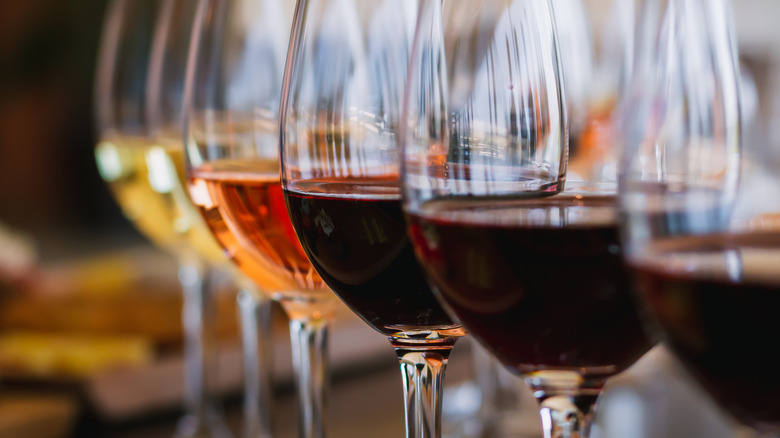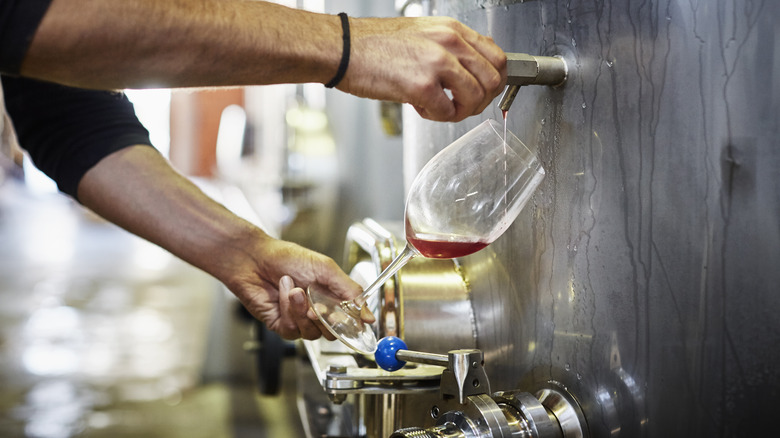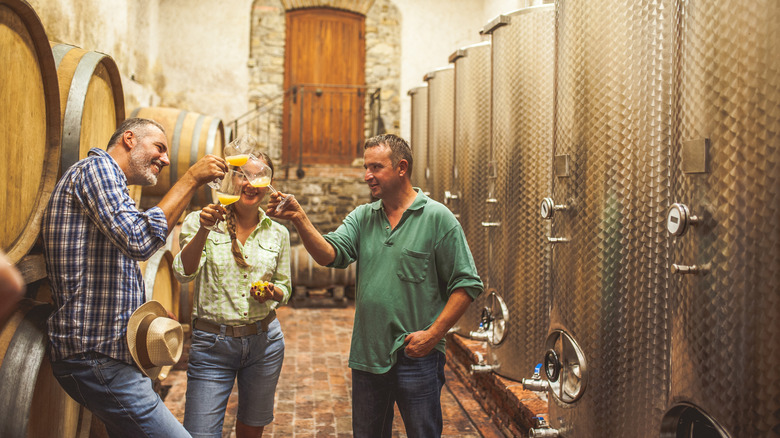The Difference Between Fining And Filtering Wine
Wine is so easy to drink, but it's not so easy to make. Winemaking can be broken down into six basic steps: growing the grapes, harvesting, crushing and pressing, fermentation, clarification, and bottling. Little did you know there's a lot more to step five, clarification, than meets the eye. The two main parts of this process are fining and filtering — here's how to tell them apart.
The fining process has been around for centuries. It occurs before filtration and is designed to remove particles from the wine by introducing an outside ingredient to do so. Fining is also key to lowering the number of potentially harmful proteins within the wine. Filtration is a much more recently developed process that is used to remove sediment from wine, making it less cloudy and more polished, and possibly helping prevent spoilage. Although there is debate about the necessity of these processes, they each work in different ways to clarify the wine while also — some say — making it more suitable for drinking.
A deep dive into fining wine
As it's fermented, wine builds up certain particles that enhance the quality and flavor of the drink; and while they're useful in the fermentation process, they can be removed before drinking. That's where fining comes in — an outside agent is added to the wine that binds to the particles and makes them large enough to be filtered out. A primary reason for this process is to keep bad proteins from bonding in the wine if it gets too warm after bottling. Keeping the proteins in the bottle could potentially affect the taste as they may make the wine go sour.
One of the most interesting aspects of fining is the different substances that are used. Some of the most common are gelatin, which reduces bitterness and browning; egg whites for astringency in red wine; and bentonite clay made from volcanic ash that removes proteins. Don't worry, you won't encounter egg-flavored wine because these ingredients specifically interacts with certain types of particles that are then removed.
After the fining process is complete — in some cases after multiple agents are used on the same wine — the enlarged particles are removed. This is where filtration comes in, and filter sizes range to accommodate the size of the particles. You can also filter your wine at home by decanting, but make sure to know the do's and don'ts of decanting before giving it a try.
To clarify or not to clarify? That is the question
While many believe the fining and filtering processes are necessary for the wine to be safe and drinkable, there are those who believe the processes can and should be skipped. This is where we dip into the territory of natural wine, which doesn't mean it comes from natural ingredients, but actually refers to drinking the wine in a more natural state. Many natural winemakers avoid fining and filtering their wines, claiming the processes rob the wine of its fermented flavor, texture, and color. This could mean a loss of the qualities that make a wine 'smooth' or tannic. Some say the process ruins the mouth-feel and thus the wine tasting experience, and argue that fining can be replaced by letting a wine barrel ferment for an extra year.
The other argument against fining and filtering deals more with the specific ingredients and methods used in the processes. One controversy revolves around the reality that not all wine is vegan. Vegan wine drinkers oppose the use of egg whites and other animal products for fining as it removes the inherent vegan-ness of the drink. Others argue that the filtration process uses harsh methods that take away the beneficial qualities from ingredients like natural yeast that appear during fermentation. In essence, many wish to preserve the purity of the wine, but in the wine world, sometimes purity is in the eye of the drinker.


